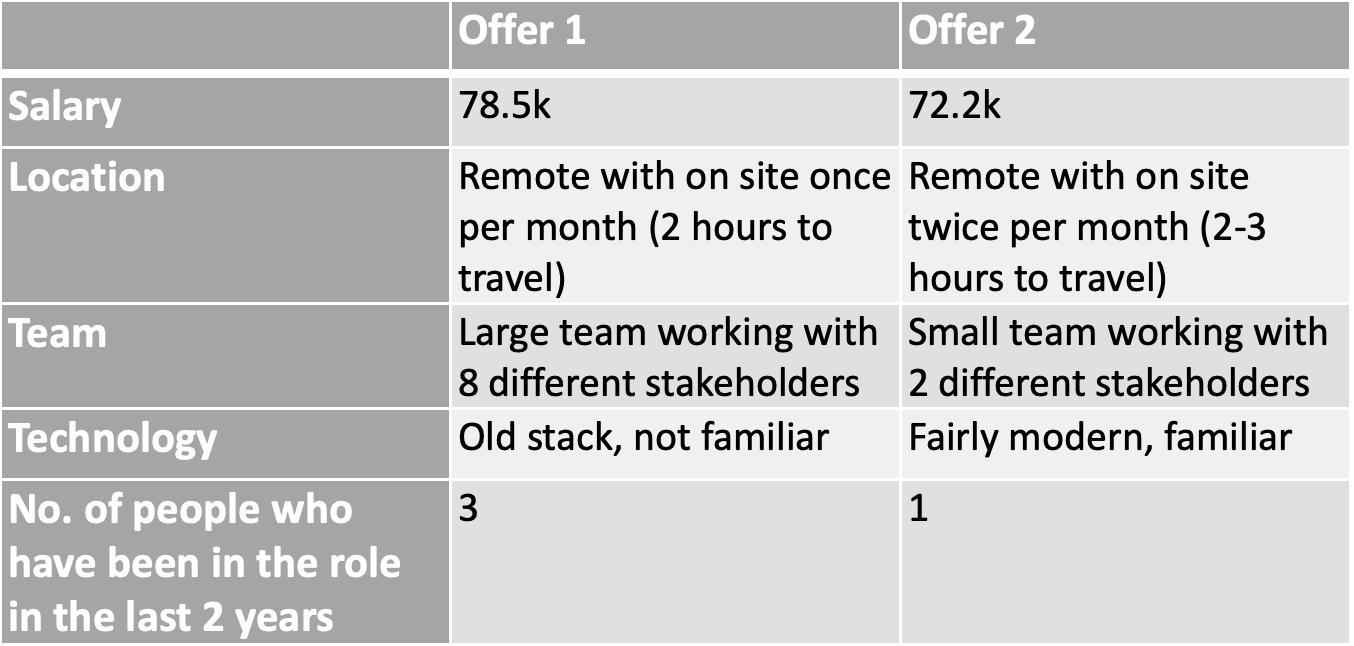|
Do I start my day with a coffee or just a large glass of water? Should I stick to black coffee or go for a flat-white? I love flat-white but who needs the milk, right? You can easily imagine your life as a series of decisions that you have to make all day, every day. Even when it doesn’t seem like it.... Even when it doesn’t seem like it, you make decisions all the time and sometimes not making a decision is also, in a way, making a decision. Naturally, some decisions are small and have little effect on your life and then others are quite big and significant, with consequences that can last for years. Small decisions, like my coffee dilemma in the morning, probably don’t need a lot of time and effort invested and won’t make much difference in the long run. Big decisions on the other hand can often seriously change the direction of your life. For instance, shall I take a job offer in Berlin or stick with London? And then there’s all the other decisions that fall in the middle between big and small. I typically use the rule of three concerns only for what I would categorise as big decisions - e.g. changing job, buying a house, that sort of thing. It is up to you if you want to widen the spectrum of decisions you use it for. I am aware that some people like analysing their options much more than I could ever do. What is this rule? The rule has two elements. The first step is to determine, when considering a decision, am I seriously worried about at least 3 different things. If I answer yes to this question I move to the second step which is to test each of the 3 concerns with 3 questions that I (sort of) borrowed from REBT. The questions are 1) is it real? 2) does it make sense? 3) can I live with it? . Those familiar with REBT will notice that the last question is modified to suit evaluating concerns (after all we are not doing REBT therapy here). The reason for asking these questions is to evaluate if this is a real, logical concern and if so is it one I can live with. If it is real and makes sense and I can’t live with it then it is a valid concern. I will explain more how to use them below. I only recently started using these questions. Before discovering REBT I used to try and tell myself the whole story about each concern as opposed to just my, biased version. That approach of course has its flows and I thought that using the REBT questions results in a better evaluation. Let’s look at an example. Suppose I am on the verge of changing jobs and I’ve been lucky enough with interviews so now I have 2 offers on the table. Here’s a summary of what they are Clearly offer 1 is paying more and I could be tempted to opt for it so I get better remuneration. However, I have a few concerns with this role:
Concern number 1 - I am worried about the number of calls I will need to attend because of the many stakeholder and the large team size. Is it real? - Suppose I can go back to the company and ask if this is true or be able to talk to the person currently in the role. But I was given this information so I can assume it is true. Does it make sense? - My experience tells me that with this many stakeholders and a big team it absolutely makes sense to expect large number of video calls every day. Can I live with it? - As an introvert, I most certainly can’t! Concern number 2 - I am worried about how many people have left the role in the last 2 years Is it real? - Yes, this has been confirmed to me. 3rd person in 24 months is looking to leave the role. Does it make sense? - Considering the 8 different stakeholder with their different projects and deadlines, it makes perfect sense to me that the role is not one that people stay in for a long time. Can I live with it? - As much as I like new jobs, I wouldn’t want to be leaving after less than a year, so no, I certainly can’t live with it. Concern number 3 - I am worried that the technology is unfamiliar and is also old Is it real? - Yes, I know for a fact that the technology being used is old and it is also a fact that I have never used it. Does it make sense? - I don’t mind learning new technologies however in today’s market we all have to keep our skills up to date and learn new, not old technologies. Can I live with it? - Perhaps I could live with it and if this was my only concern I’d be happy to proceed. What do I do with these results? I have 2 out of 3 concerns that are real, make sense and I can’t live with and one that is real and makes sense but I could potentially live with. My rule of thumb is that 2 validated concerns and one that is half way there is a deal breaker. In this case I would conclude that Offer 1 does not pass the rule of 3 concerns and therefore I will have to decline it. Just to complete the illustration let’s now look at another hypothetical concern and see how it tests against the questions. Suppose I am worried about travel after several years of not travelling at all and I am concerned about the time I would lose on the road. Concern - I am worried that I would need to travel to an office twice a month Is it real? - Yes, I have been told that this is a requirement of the role. Does it make sense? - I have travelled before to an office, often 5 days per week. It doesn’t make sense for me to worry about travelling twice per month. Can I live with it? - since I’ve done it before up to 5 days per week, I would think I can survive twice per month. In this case I have to conclude that my concern does not pass and I can live with it. This illustrates the value of the three questions. Often your concerns will be either not real or will not make sense and you may discover that even if they are real you can comfortably live with them. On the other hand if you concerns go through the 3 questions and remain a concern then you know you’re not just making it up.. but it is rather real. To summarise here’s how the rule of three concerns works. Step 1: Look through your options and see if you have any immediate concerns. List all concerns that you consider to be potential deal breakers. Step 2: For all of your concerns ask 3 questions: 1. Is it real? 2. Does it make sense? 3. Can I live with it? Step 3: Look at your scores. My rule of thumb is that if I have at least 3 (or 2.5) concerns that are real, make sense and I can’t live with, then the deal is off. As you’ve noticed with my example 2 and a half concerns is enough to break the deal in my book. The half is a concern that I could live with but is real and makes sense. So I’d round that up to 3 concern and not proceed with that specific option. I hope you find the rule of three concerns useful and if you ever decide to apply it in your decision making do let me know how it goes. |
Welcome to our blog!About the authorPlamen is a LeanStack coach and an experienced Software Delivery consultant helping organisations around the world identify their path to success and follow it. Archives
May 2024
Categories
All
|



 RSS Feed
RSS Feed
